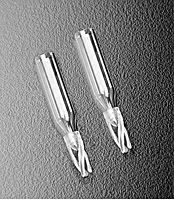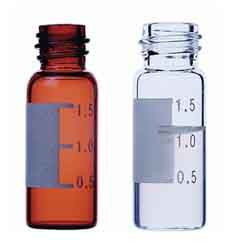Today I will be talking about a highly specific, ultrasensitive method, Liquid Chromatography- Mass Spectrometry (LC-MS).
Principle
LC-MS is using a combination of techniques, liquid chromatography and mass spectrometry.
The type of chromatography that I’m using is liquid chromatography which involves the use of a liquid mobile phase and a column stationary phase. The purpose of chromatography is to separate compounds in a complex mixture. Mixture is added to the automated instrument, LC, where the compounds in the mixture will distribute or separate themselves between the mobile and stationary phase to varying degrees. Compounds that are retained strongly by the column will be eluted out slowly with the flow of mobile phase while compounds that are weakly held by the column will be eluted out rapidly. The solvents that I use for my liquid mobile phase are polar solvents and the stationary phase is a non-polar column. Therefore, the compounds are separated based on polarity. Hence, those compounds that are polar will be eluted out first with the mobile phase and non-polar compounds will be retained by the column and eluted out slowly. This will then results in different retention time.
After the separation of compounds, each compound will then pass through the mass spectrometer for detection. Inside the mass spectrometer, there are a few components.
1) The inlet system: It will direct where the injection of eluent (from the LC) should go, either to the waste or to the MS.
2) Ion Source: It is for the ionization of compounds to form molecular (molecular = parent ion) and daughter ions (further break down of the parent ion). There are two types of ion mode, positive and negative. There are different types of ion sources, examples are electrospray ionization (ESI) which uses high electrical field, thermospray ionization (TS) which uses high temperature, and matrix-assisted desorption/ionization (MALDI) which uses laser beam.
3) Mass analyzer: The ions will be scanned by the analyzer
4) Detector: After scanning, the ions will pass through the detector for detection
5) Signal processor: After detection, signal is generated and shown as mass spectrum. Using a special kind of software for the instrument, it will quantitate the amount of compounds.
Application of LC
The main application of LC is to separate compounds. There are a lot of people who uses LC to separate compounds and use the purely isolated compounds for other experiments.
Applications of MS
MS has the ability to detect well and is capable of providing information about the elemental composition of samples, the structure of inorganic, organic, and biological molecules, and the qualitative and quantitative composition of complex mixtures. People use MS to detect new compound or to use MS to measure compound of interest in a sample.
Using LC-MS to measure progesterone
For me, I used LC-MS to measure progesterone concentrations, but it can also be used to measure other compounds too. The sample that I’m using is plasma and it contains all kinds of compounds therefore LC will first separate the compounds and MS will detect. I used SRM (Selected Reaction Monitoring) where I specifically type in the molecular and daughter ions of progesterone. The machine will then specifically detect progesterone for me. The mass spectra produced will shows a lot of peaks because there are a lot of different compounds present in the sample. But when I use SRM, it will tell me which peak belongs to progesterone, the time where progesterone is being eluted out (retention time) and the intensity of the peak. After getting the mass spectra of progesterone, the amount of progesterone (in ng/ml) is calculated using the software.
Before loading the sample into LC-MS, the sample is extracted first (mentioned in the previous post). After extraction, around 100ul-150ul of the extracted sample is added into the glass insert and the glass insert is placed inside the sample vial. The sample vial is then loaded onto the LC-MS.

Schematic diagram of a glass insert
Retrieved on October 22, 2009 from website http://www.chem.agilent.com/en-US/Store/_layouts/Agilent/Commerce/ProductDetail.aspx?productID=5183-2088

Glass insert
Retrieved on October 22, 2009 from website http://images.google.com.sg/imgres?imgurl=http://jgfinneran.thomasnet.com/ImgMedium/629GLASS.jpg&imgrefurl=http://jgfinneran.thomasnet.com/product/inserts-shell-inserts-12-x-32-mm-/inserts-glass-1270&usg=__rxpk0TG0xG9Ls-TcJckUHUXxHBc=&h=200&w=174&sz=31&hl=en&start=7&tbnid=2VvSmLXopeUazM:&tbnh=104&tbnw=90&prev=/images%3Fq%3Dsample%2Bvial%2Bwith%2Bglass%2Binsert%26gbv%3D2%26hl%3Den

Sample vials
Retrieved on October 22, 2009 from website http://images.google.com.sg/imgres?imgurl=http://www.nationalscientific.com/products/images/013-Product.jpg&imgrefurl=http://www.nationalscientific.com/vials/products.aspx%3Fid%3D13&usg=__O375JpYTpU7adXng45qCvA9L0BI=&h=249&w=225&sz=34&hl=en&start=60&tbnid=9EIOFx9VQHykfM:&tbnh=111&tbnw=100&prev=/images%3Fq%3Dsample%2Bvial%2Bwith%2Bglass%2Binsert%26gbv%3D2%26ndsp%3D18%26hl%3Den%26sa%3DN%26start%3D54
In order for the needle to inject properly, glass insert is needed to raise the height. When handling large amount of sample, sample vial without the glass insert is used.
That's all!!!
Zhang'e
0704086H
TG02
No comments:
Post a Comment